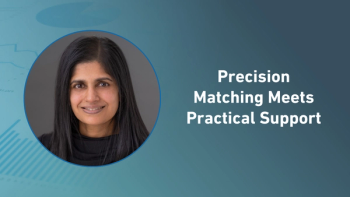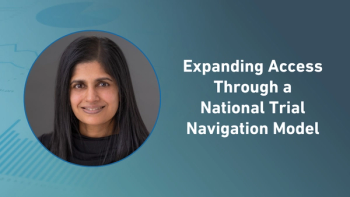
- Applied Clinical Trials-10-01-2008
- Volume 0
- Issue 0
A Light at the End of the R&D Pipeline
After almost a decade of dim progress in drug development, R&D is finally making a come back, according to current data published in Parexel International's, "The U.S. Drug Approval Trends and Yearbook 2008/2009."
After almost a decade of dim progress in drug development, R&D is finally making a come back, according to current data published in Parexel International's,
NMEs are "the best measure for true output, rather than what is being put into the system. If it comes through such rigorous review it must have promise because it wouldn't be there if it didn't," Faiz Kermani, PhD, account manager at Health Interactions, said when reflecting on the 33% increase in NME submissions for 2007.
"Today there is certainly more drive in development than ever before. The industry has made important progress in growth," said Mark Mathieu, director of strategic research for Parexel Consulting and editor of the yearbook.
NMEs and NASs filed with the FDA and EMEA from 1995-1997
According to Parexel's data, Phase III pipelines have grown 14.6% from May 2007 to April 2008. "The R&D pipeline in Phases I and II have grown in the past two years and the phase III pipeline has grown as a result," Mathieu explained. And it seems "industry has had more success in converting these into NME submissions."
NMEs make up approximately 20% to 30% of new drug applications (NDAs) yearly, according to Mathieu, and are the most important subset of NDAs.
The number of NMEs being submitted is a vital indicator of drug development because they are completely new structures of molecules that have yet to be used in a marketed drug. They serve as a crucial determinant of a pharmaceutical company's progress in drug discovery; and the rate in which these companies are discovering, and more importantly, submitting NMEs, effects those in and out of industry.
Those effected, Kermani told Applied Clinical Trials, range from investors in drug companies who want to see if they are delivering on their promises, to patients seeking new medications, to those in charge of health care systems, such as physicians, who will be seeking new prescriptions for their patients.
Similar to the United States, the European Union is experiencing growth as well, except on a much grander scale. According to Parexel's data, the EMEA received 56 marketing applications for new active substances (NAS), making it the second highest amount in the 2000s and quite possibly the highest since the 1990s when the EMEA was founded.
While industry has seen growth in marketing applications for NMEs and NASs, Kermani told Applied Clinical Trials that it will take at least a couple of years to see if they are approved, that is, if we assume the product goes through smoothly. He explained that when taking all hurdles into consideration, a more realistic time frame would be five years.
"The regulatory environment just got that much more strict," Kermani said, "and the public has called for it." Opinions vary on the cause of declining approvals, which dropped to 16 in 2007 after a brief comeback of 31 in 2004, including that applications are weaker or, as Kermani sees it, that the FDA has become more firm. "FDA has to be seen as incredibly rigorous because the public gets angry when products get taken off the market," he added.
Only time will tell if this increase will translate into rising drug approvals, but still, Kermani observed, "it is a good sign that companies are looking to the future because they're trying to invest in new drugs. If we saw a drop it would not be an optimistic view point for the future."—Marissa Shapiro
Articles in this issue
over 17 years ago
eClinical Software: October 2008over 17 years ago
Health 2.0: Do It Yourself Doctoringover 17 years ago
Business and People Update October 2008over 17 years ago
Trial Insurance Just Got Easierover 17 years ago
Helping Trials to Help European Health Careover 17 years ago
Data Disclosure Clears FDAAA Deadlineover 17 years ago
Safety Put Into Practiceover 17 years ago
R&D In a Virtual Worldover 17 years ago
Developing a Regulatory Strategyover 17 years ago
Dutch Researchers Finally Climb on BoardNewsletter
Stay current in clinical research with Applied Clinical Trials, providing expert insights, regulatory updates, and practical strategies for successful clinical trial design and execution.




